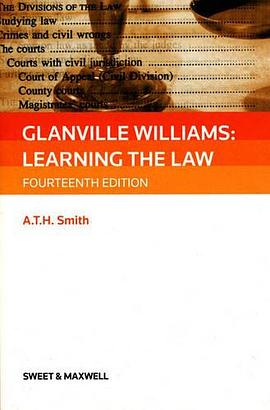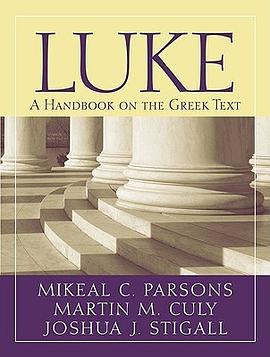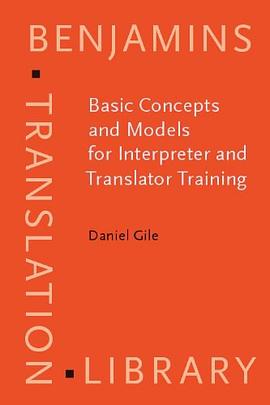
Bridging the Gap pdf epub mobi txt 电子书 下载 2026
出版者:John Benjamins Publishing Co
作者:Barbara Moser-Mercer
出品人:
页数:0
译者:
出版时间:1994-10
价格:USD 180.00
装帧:Hardcover
isbn号码:9781556194818
丛书系列:Benjamins Translation Library
图书标签:
- 非文学
- 翻译
- 口译研究
- BTL
- 沟通
- 人际关系
- 桥梁
- 理解
- 差距
- 心理学
- 技巧
- 成长
- 自我提升
- 有效沟通
下载链接在页面底部

具体描述
作者简介
目录信息
Foreword 5
INTRODUCTION
Barbara Moser-Mercer
Paradigms gained or the art of productive disagreement 17
PEDAGOGICAL ISSUES
Janet Altman
Error analysis in the teaching of simultaneous interpretation: A pilot study 25
Daniel Gile
Methodological aspects of interpretation and translation research 39
Barbara Moser-Mercer
Aptitude testing for conference interpreting: Why, when and how 57
Etilvia Arjona-Tseng
A psychometric approach to the selection of translation and interpreting students in Taiwan 69
Andrzej Kopczynski
Quality in conference interpreting: Some pragmatic problems 87
SIMULTANEOUS INTERPRETATION
Linda Anderson
Simultaneous interpretation: Contextual and translation aspects 101
Henri C. Bank
A description of various types of omissions, additions and errors of translation encountered in simultaneous interpretation 121
Ghelly Chernov
Message redundancy and message anticipation in simultaneous interpreting 139
Mike Dillinger
Comprehension during interpreting: What do interpreters know that bilinguals don't? 155
William P. Isham
Memory for sentence form after simultaneous interpretation: Evidence both for and against deverbalization 191
Tatiana Klonowicz
Putting one's heart into simultaneous interpretation 213
Miriam Shlesinger
Intonation in the production and perception of simultaneous interpretation 225
NEUROPSYCHOLOGICAL RESEARCH
David P. Corina and Jyotsna Vaid
Lateralization for shadowing words versus signs: A study of ASL-English interpreters 237
Valeria Darò
Non-linguistic factors influencing simultaneous interpretation 249
Franco Fabbro and Laura Gran
Neurological and neuropsychological aspects of polyglossia and simultaneous interpretation 273
Sylvie Lambert
Simultaneous interpretation: One ear may be better than two 319
A. Green, N. Schweda-Nicholson, J. Vaid, N. White & R. Steiner Lateralization for shadowing vs. interpretation: A comparison of interpreters with bilingual and monolingual controls 331
· · · · · · (收起)
INTRODUCTION
Barbara Moser-Mercer
Paradigms gained or the art of productive disagreement 17
PEDAGOGICAL ISSUES
Janet Altman
Error analysis in the teaching of simultaneous interpretation: A pilot study 25
Daniel Gile
Methodological aspects of interpretation and translation research 39
Barbara Moser-Mercer
Aptitude testing for conference interpreting: Why, when and how 57
Etilvia Arjona-Tseng
A psychometric approach to the selection of translation and interpreting students in Taiwan 69
Andrzej Kopczynski
Quality in conference interpreting: Some pragmatic problems 87
SIMULTANEOUS INTERPRETATION
Linda Anderson
Simultaneous interpretation: Contextual and translation aspects 101
Henri C. Bank
A description of various types of omissions, additions and errors of translation encountered in simultaneous interpretation 121
Ghelly Chernov
Message redundancy and message anticipation in simultaneous interpreting 139
Mike Dillinger
Comprehension during interpreting: What do interpreters know that bilinguals don't? 155
William P. Isham
Memory for sentence form after simultaneous interpretation: Evidence both for and against deverbalization 191
Tatiana Klonowicz
Putting one's heart into simultaneous interpretation 213
Miriam Shlesinger
Intonation in the production and perception of simultaneous interpretation 225
NEUROPSYCHOLOGICAL RESEARCH
David P. Corina and Jyotsna Vaid
Lateralization for shadowing words versus signs: A study of ASL-English interpreters 237
Valeria Darò
Non-linguistic factors influencing simultaneous interpretation 249
Franco Fabbro and Laura Gran
Neurological and neuropsychological aspects of polyglossia and simultaneous interpretation 273
Sylvie Lambert
Simultaneous interpretation: One ear may be better than two 319
A. Green, N. Schweda-Nicholson, J. Vaid, N. White & R. Steiner Lateralization for shadowing vs. interpretation: A comparison of interpreters with bilingual and monolingual controls 331
· · · · · · (收起)
读后感
评分
评分
评分
评分
评分
用户评价
评分
评分
评分
评分
评分
相关图书
本站所有内容均为互联网搜索引擎提供的公开搜索信息,本站不存储任何数据与内容,任何内容与数据均与本站无关,如有需要请联系相关搜索引擎包括但不限于百度,google,bing,sogou 等
© 2026 book.quotespace.org All Rights Reserved. 小美书屋 版权所有




















